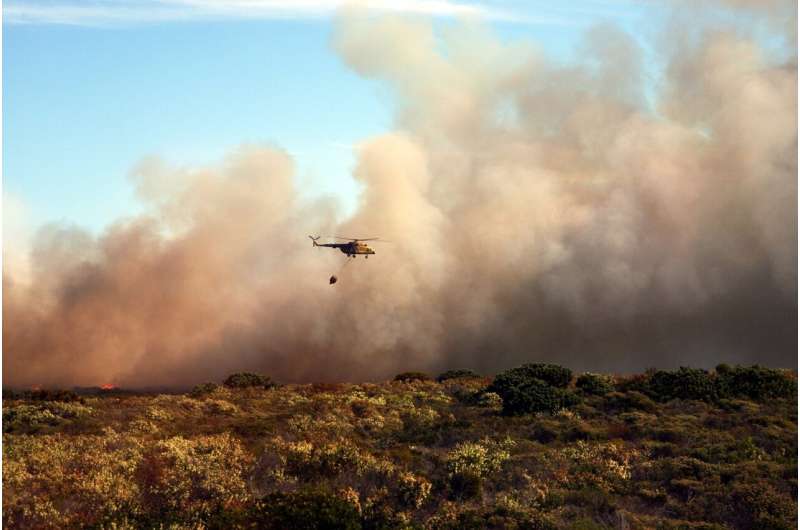Air quality isn't just bad in cities. Here's why and how we're tracking pollution from upland fires

Lisa Lock
scientific editor

Andrew Zinin
lead editor

Early one October afternoon in 2023, thick gray smoke drifted across Sheffield's western skyline. As much of the city became blanketed, residents turned to social media to complain about "," while others were the city due to breathing difficulties.
However, this smoke did not originate within the city. It was drifting in from the Peak District, more than nine miles away, where controlled heather burning was taking place on the moorlands. For around six hours, levels of fine particulate matter (), tiny airborne pollutants known to harm human health, , well above the guidelines recommended by the .
This single incident points to the wider and largely invisible problem of the routine burning of the UK's uplands. This can be a serious source of air pollution, but because most official air pollution monitoring concentrates on urban areas, the effects are overlooked. This is why we have started upland fires and the pollution they cause.
Prescribed burning is a longstanding land management practice often used to control vegetation for grouse shooting or livestock grazing. It happens across a range of upland landscapes. Many of the areas being burned sit on deep peat, an organic-rich soil made from layers of slowly decomposed plant material formed over thousands of years in waterlogged conditions.
Peatlands are incredibly important. They are one of the most carbon-rich ecosystems on the planet. In the UK, they cover around 12% of the land area and store an estimated . This is equivalent to all the forests of Germany, France and the UK combined. Most of the UK's peat is found in Scotland, but notable areas in England include the . However, their value goes well beyond carbon.
Around comes from upland areas that are largely peatland, and healthy peatlands help by slowing the flow of water from hills to towns and cities. They also provide vital habitats for birds, insects and rare plants, forming the UK's largest area of semi-natural habitat.
Despite their ecological importance, more than 80% of English peatlands are classified as degraded, often through historic air pollution, draining, overgrazing and, importantly, repeated burning.
One hidden consequence of that burning is air pollution. These burns are often viewed as isolated rural events, but their effect on regional air quality can be substantial. On that day in Sheffield, pollution levels briefly rivaled those seen across the city during , a well-known peak in urban air pollution.
In response to that October event, our research team launched a new pilot monitoring network across part of the Peak District national park. This project combines air quality sensors, satellite data and community observations to detect and measure pollution from upland fires.
By using a mix of technologies and local reporting, we have documented spikes in PM2.5 pollution that would have otherwise been missed. Our system offers a clearer picture of when and where fires occur, and how far their smoke spreads, opening the door for better planning and stronger protections for public health. But the problem is not just a lack of data, it is also a failure of regulation. England's current upland burning regulations are limited on four fronts.
Heather and grass burning regulations introduced in 2021 prohibit burning only on peat deeper than 40cm inside designated sites. That means from these protections.
With more than of PM2.5 monitors located in urban areas, smoke from moorland fires in remote rural locations is on official networks.
The resources for organizations responsible for enforcing regulations have over the last decade. Natural England, one of the government's statutory bodies responsible for environmental protection, has experienced a in funding for 2024–25 compared to the previous year.
Prosecutions for illegal burning are , with satellite analyses pointing to a higher level of unlicensed activity than suggest.
In short, narrow legal scope, limited monitoring coverage and under-resourced enforcement leave many prescribed burns undetected and unaccounted for, along with the health and environmental risks they carry.
Our FireUp system improves fire detections and helps quantify the effects of air pollution from these burns. As the as part of the 2025 for England, and as upland , this kind of evidence is essential, not just to track what is happening, but to help shape a healthier and better future for the UK's uplands.
Our next step is to develop a citizen science app that makes it easier for people to report peatland fire incidents and upland burning to help improve regulation and log the effects of changes in air quality.
Provided by The Conversation
This article is republished from under a Creative Commons license. Read the .![]()





















